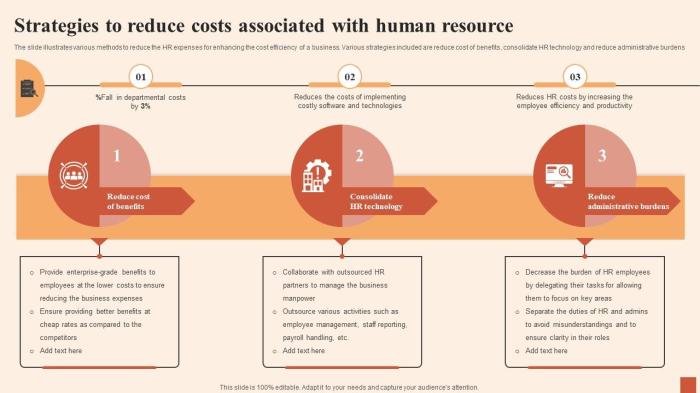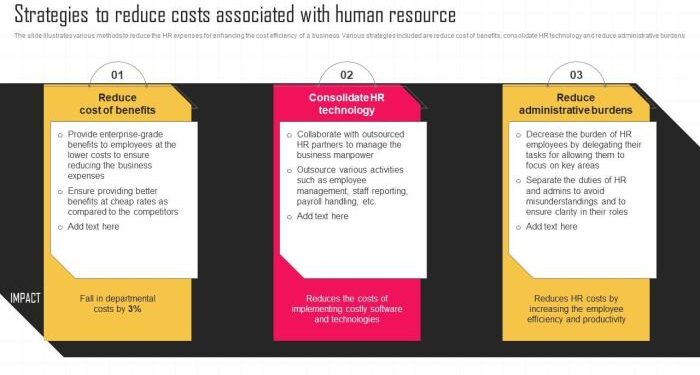Embark on a journey towards cost efficiency with smarter resource management. Discover how businesses can optimize their resources to drive down expenses while enhancing productivity.
Exploring the realms of technology, workforce efficiency, inventory management, and energy conservation, this guide offers practical insights into reducing costs through strategic resource allocation.
Introduction to Smarter Resource Management

Resource management is the strategic planning and allocation of an organization's resources to achieve its goals effectively and efficiently. When it comes to reducing costs, smarter resource management plays a crucial role in optimizing the use of resources to minimize wastage and maximize productivity.
Efficient resource allocation in businesses is essential for maintaining competitiveness and profitability. By identifying and implementing cost-saving measures through smarter resource management, companies can improve their bottom line and gain a competitive advantage in the market.
Examples of Resources for Cost Reduction
- Labor: By streamlining processes, improving workflow, and cross-training employees, businesses can reduce labor costs while maintaining productivity levels.
- Energy: Implementing energy-efficient practices, such as using smart technology and optimizing usage schedules, can lead to significant cost savings on utility bills.
- Inventory: Proper inventory management, including just-in-time practices and inventory tracking systems, can help reduce excess stock and minimize storage costs.
- Technology: Upgrading and optimizing technology systems can improve efficiency, reduce downtime, and lower maintenance costs in the long run.
Implementing Technology for Resource Tracking
Technology plays a crucial role in tracking and managing resources efficiently. By leveraging software or tools specifically designed for resource monitoring, businesses can streamline their operations, reduce wastage, and optimize resource allocation.
Benefits of Using Resource Management Software
- Improved Efficiency: Resource management software automates the process of tracking and allocating resources, saving time and reducing the likelihood of errors.
- Cost Savings: By accurately monitoring resource usage and optimizing allocation, organizations can identify areas of inefficiency and reduce unnecessary expenses.
- Enhanced Collaboration: Many resource management tools offer collaboration features that allow team members to easily communicate, share information, and coordinate tasks.
- Data-driven Decisions: With access to real-time data and insights provided by resource tracking software, businesses can make informed decisions to improve resource utilization and overall performance.
Popular Resource Management Software
- Microsoft Project:A comprehensive project management tool that includes resource tracking features to help businesses manage resources effectively.
- Asana:A popular task management platform that offers resource allocation and monitoring capabilities to streamline workflows.
- Monday.com:A versatile project management tool that enables teams to track resources, collaborate on tasks, and optimize project timelines.
- Smartsheet:An intuitive work management platform that allows users to track resources, manage tasks, and visualize project data for better decision-making.
Optimizing Workforce Efficiency
Optimizing workforce efficiency is crucial for reducing costs and maximizing productivity in any organization. By strategically scheduling shifts based on resource demand and balancing workload distribution among employees, businesses can achieve significant savings.
Scheduling Shifts Based on Resource Demand
One effective strategy for reducing costs is to schedule shifts based on resource demand. By analyzing historical data and forecasting future needs, businesses can optimize workforce schedules to match peak hours and high-demand periods. This ensures that the right number of employees are available at the right times, preventing understaffing or overstaffing situations.
- Utilize workforce management software to track busy periods and adjust schedules accordingly.
- Implement flexible scheduling options to accommodate fluctuating demand.
- Consider cross-training employees to handle multiple roles and tasks efficiently.
Balancing Workload Distribution Among Employees
Another key aspect of workforce optimization is balancing workload distribution among employees. By ensuring that tasks are assigned based on skills, availability, and workload capacity, businesses can prevent burnout, reduce overtime costs, and improve overall efficiency.
- Use workload management tools to assign tasks based on employee skillsets and availability.
- Promote collaboration and communication among team members to streamline workflow.
- Regularly review and adjust workload distribution to avoid bottlenecks and optimize productivity.
Inventory Management and Cost Reduction
Efficient inventory management plays a crucial role in reducing costs for businesses. By optimizing the way resources are tracked and utilized, organizations can minimize waste and improve overall efficiency, leading to significant cost savings.
Methods for Reducing Excess Inventory
- Implement Just-in-Time (JIT) Inventory Systems: By only ordering and receiving goods as they are needed for production or sale, companies can minimize excess inventory holding costs.
- Utilize Inventory Forecasting Tools: Leveraging technology to predict demand and adjust inventory levels accordingly can help prevent overstock situations.
- Establish Clear Communication Channels: Ensuring effective communication between different departments can help prevent duplicate orders and unnecessary stockpiling of goods.
Successful Inventory Management Strategies
- ABC Analysis: Categorizing inventory based on importance and value can help prioritize resources and focus on managing high-value items more effectively.
- Vendor Managed Inventory (VMI): Allowing suppliers to monitor and replenish inventory levels directly can streamline the supply chain and reduce carrying costs for the business.
- Regular Inventory Audits: Conducting frequent audits to identify discrepancies, obsolete stock, or inefficiencies can lead to better decision-making and cost reductions.
Energy and Utility Cost Reduction
Energy and utility costs can significantly impact a company's overall expenses, affecting the bottom line. It is crucial for businesses to find ways to optimize energy usage in the workplace to reduce costs and improve sustainability.
Optimizing Energy Usage
One effective way to reduce energy costs is by implementing energy-saving practices in the workplace. This can include turning off lights and equipment when not in use, utilizing natural light and ventilation, and ensuring that heating and cooling systems are running efficiently.
Investing in Energy-Efficient Technologies
Another strategy for long-term cost savings is investing in energy-efficient technologies. This can involve upgrading to LED lighting, installing programmable thermostats, and using energy-efficient appliances and equipment. While there may be an initial investment cost, the long-term savings from reduced energy consumption can outweigh the upfront expenses.
Ending Remarks

As we wrap up our exploration of smarter resource management for cost reduction, remember that efficiency and innovation are key to sustained financial health. By implementing these strategies, businesses can thrive in a competitive landscape while keeping costs in check.
Quick FAQs
How can resource management contribute to cost reduction?
Efficient resource management ensures that resources are utilized optimally, eliminating waste and unnecessary expenses.
What are some popular resource management software options?
Examples include Trello, Asana, and Microsoft Project for effective resource tracking and allocation.
Why is optimizing energy usage important for cost reduction?
Reducing energy consumption not only cuts operational costs but also aligns with sustainability goals, benefiting both the environment and the bottom line.













